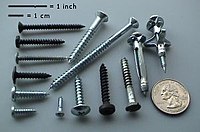
Photo from wikipedia
The high-speed railway (HSR) has been a long-term hotspot in both scientific and engineering societies to enhance the long-term high quality HSR service. This study aims to investigate the WJ-7B… Click to show full abstract
The high-speed railway (HSR) has been a long-term hotspot in both scientific and engineering societies to enhance the long-term high quality HSR service. This study aims to investigate the WJ-7B type small resistance fastener rubber pad applied in HSR, and temperature sweep test is applied to determine the mechanical parameters of the fastener rubber pad, which are hereafter introduced into the vehicle-track-viaduct vertical coupling model via dynamic flexibility method. The track irregularity spectrum is considered as fixed-point excitation to investigate the temperature-dependent effect of fastener rubber pad on the dynamic responses. The results reveal that the rigidity of the fastener rubber pad is low temperature sensitive and high temperature stable, and the temperature variation has little effect on the vertical dynamic responses of the vehicle. The dynamic flexibility of the rail increases in amplitude and the dominant frequency decreases as the temperature of the fastener rubber pad increases. The vertical dynamic responses of the wheel-rail force, the wheelset and the rail-viaduct system gradually decrease as the temperature of the fastener rubber pad increases, and the peak frequency follows the similar rule. While under high temperature circumstances, the temperature dependent stiffness of the fastener rubber pad has little influence on the peak of the dominant frequency in the vertical dynamic response of the track-viaduct system.
Journal Title: Applied Sciences
Year Published: 2020
Link to full text (if available)
Share on Social Media: Sign Up to like & get
recommendations!